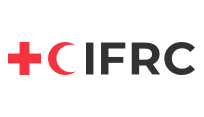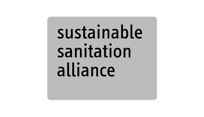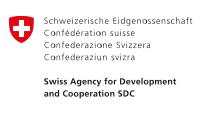Whenever possible, recyclables recovered from waste must be handed over or sold to the recycling sector. Its market value depends on economic interest as well as the quantity, quality and purity of the recyclables. Market assessments are needed to identify existing recycling initiatives, relevant stakeholders, selling prices and required quality and pre-processing.

Recyclables recovered from waste must be sold or handed over to existing recycling sectors. The range of recyclables and selling prices depend on local economic interest and may include glass, paper, cardboard, textiles and different types of metals and plastics. Clean and well-sorted recyclables typically achieve higher prices and larger amounts can facilitate trading. Enhanced transportability, through pre-processing techniques such as crushing, shredding or baling of recyclables, can further increase prices and expand the range of tradable materials. A thorough market assessment is needed to identify existing recycling initiatives, relevant stakeholders, materials of interest, required quality and pre-processing and selling prices. Ideally, recyclables should be segregated at source to achieve higher recovery rates and ensure cleaner materials P.2. Source-segregated fractions or mixed waste can be handled in centralised sorting, pre-processing and storage facilities often called Material Recovery Facilities (MRF).
Design Considerations
Before the sale or handover to traders, recyclables may have to be further sorted, cleaned or pre-processed (e.g. crushing, shredding or baling) to enable trading and enhance resale value. Large storage spaces allow the accumulation of larger quantities. This facilitates the efficient use of further transport means and the possibility of waiting until the optimum time to sell. The space can also serve as a showroom for interested traders. High-density plastics are ideally shredded into smaller pieces and lighter metal containers compacted. Both can be stored and transported in jute bags or industrial big bags. Crushed glass or metal can be stored and transported in metal containers. Paper and cardboard can be tied up into piles which are then, ideally, fixed onto wooden pallets. Piles of hydraulically compressed metals can also be stored and transported on pallets.
Materials
Sorting, pre-processing and storage requires a sufficiently sized, roofed and fenced facility. A table can be used to sort the waste. Conveyor belts for sorting are typically not recommended unless very large amounts of waste are being sorted. Different containers are required for the storage and transport of recyclables and to meet the requirements of traders. A weighing system, such as industrial floor scales or crane scales, is needed to monitor the in and out-flux of recyclables. Such recorded data can help in future negotiations with traders and in recycling market exploration. Pre-processing equipment may include shredders and hydraulic baling presses. Trucks and forklifts can provide internal transport in the facility. Further transport might be delegated to the trader. Regular high-sided open-top trucks used in construction can be deployed for bulk transport.
Applicability
The handover or sale of recyclables is predominantly limited to stabilisation, recovery, protracted and stable contexts as they require effective waste segregation and a functional recycling sector. The latter is unlikely to be operational during or shortly after emergencies. While the sale of recovered materials will not cover the overall operational costs of the SWM service, it can still contribute to lower costs and the cross-financing of its activities, while supporting the local economy. For these reasons, the implementation and improvement of waste segregation P.2 and the subsequent sale or handover of recyclables to a centralised facility should be continuously considered and evaluated by SWM service providers.
Operation and Maintenance
The sale of recyclables requires the continuous monitoring of the recycling market, including potential buyers, selling conditions (e.g. minimum amounts, pre-processing, packaging) and price ranges. Regular cleaning of the facility is required to avoid the accumulation of waste in an uncontrolled manner. Recyclables must be adequately stored to prevent odour nuisance and attraction of disease vectors. The use of pre-processing equipment requires regular maintenance as well as staff training.
Health and Safety
Safety precautions are necessary to limit the exposure of workers to waste, ensure safe equipment use and prevent injury, especially in the presence of (medical) sharps or when dealing with heavy loads. Personal protective equipment must be provided to operators involved in the handling of recyclables and staff must be sufficiently trained in occupational health and safety X.4. Facilities must have changing rooms and access to water for personal hygiene.
Costs
The cost of selling recyclables depends on the amounts handled and the facility size. Capital costs are mainly linked to land acquisition, the construction of a roofed and fenced facility with all necessary installations and vehicles and the equipment required for the pre-processing and packaging of recyclables. Operational costs are mainly staffing, water, fuel and electricity needs. Revenue might be generated from the sale of recyclables, which can reduce or offset the operational costs of the recyclable trading. Negotiations should be undertaken with recyclables buyers to cover any transportation costs.
Social Considerations
The informal waste sector is often involved to some extent in the collection and sale of recyclables. Creating competition with the informal sector must be avoided. Instead, efforts should be made to formalise the informal workforce and integrate it with SWM initiatives X.1. Establishing parallel recycling markets, competing with existing recycling sector actors and distorting local markets as a result, must always be prevented X.5.
Key Decision Criteria
Input Products
Plastics
Paper and Cardboard
Metals
Glass
Textile
Response Phase
Application Level
Management Level
Space Required
medium
Technical Complexity
low
Objectives & Key Features
Handover of recyclables
Strength & Weakness
- Creates revenue which can help to cross-finance SWM efforts
- Reduces the amount of waste to be disposed of
- Can supply inexpensive raw materials to local economic initiatives
- Can distort local recycling markets if not carefully implemented
- In humanitarian settings, local recycling markets may not exist, or only to a limited degree






